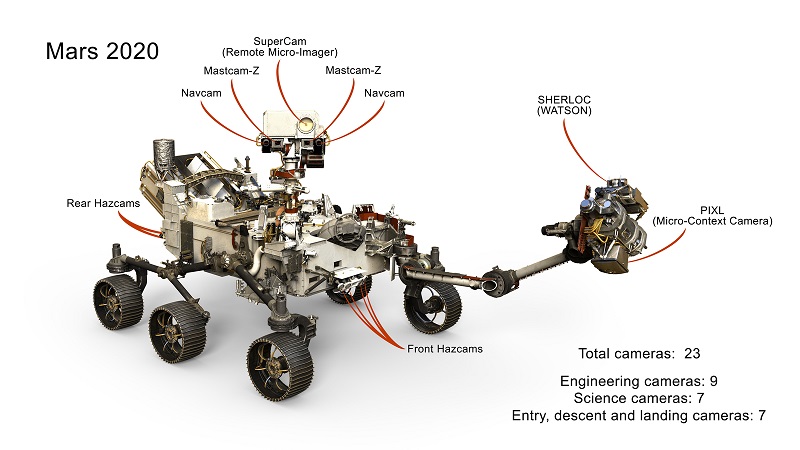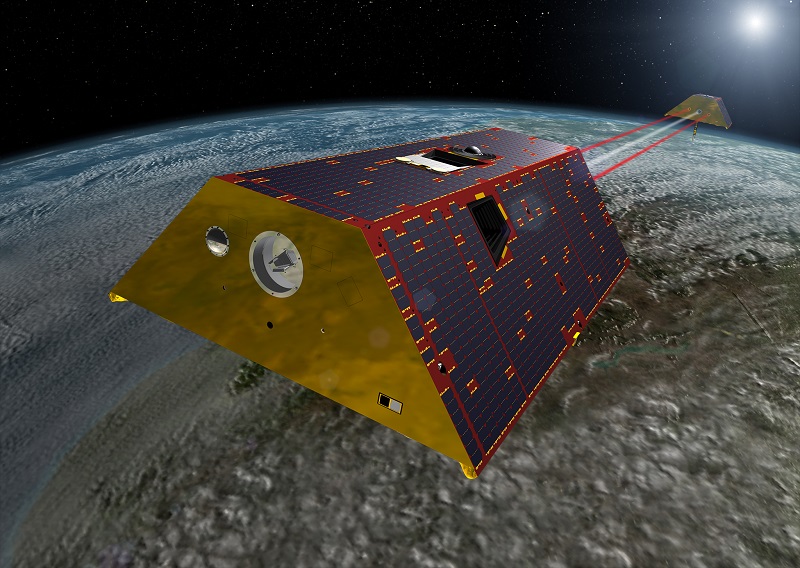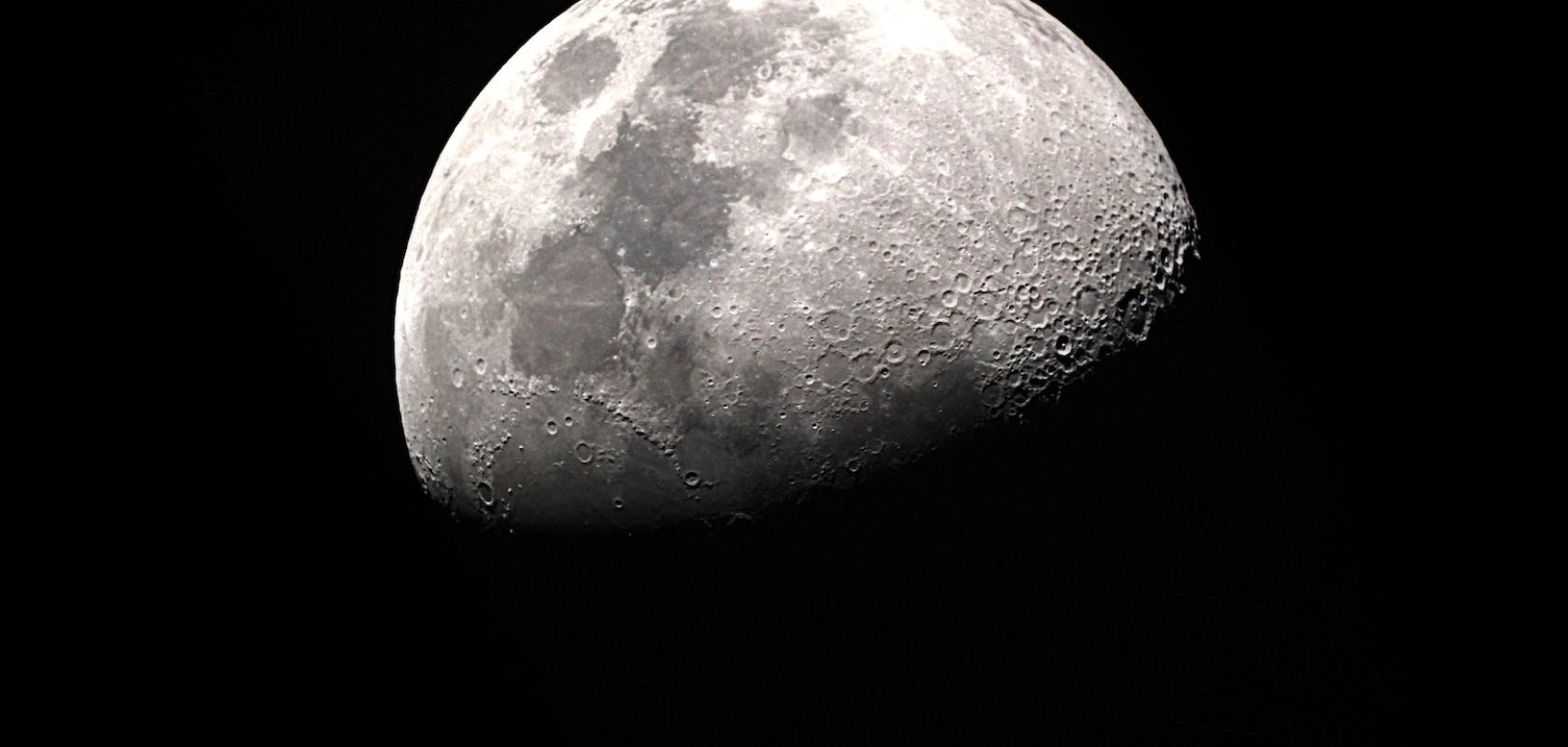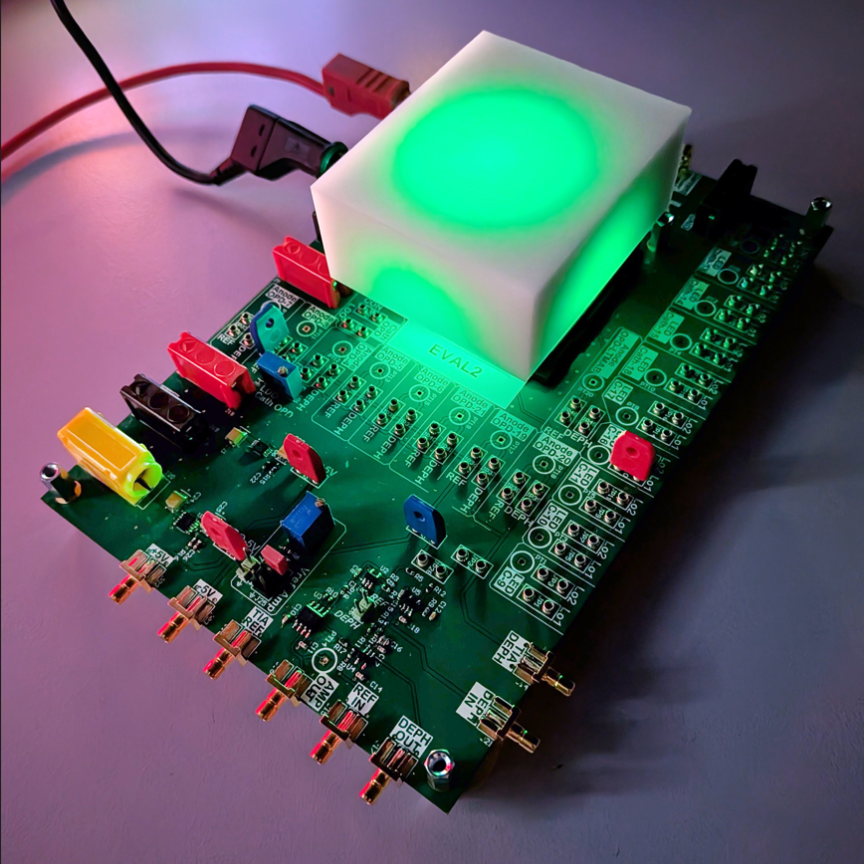Multiple Photonics firms made announcements in July revealing their collaboration with space missions.
Lynred's Neptune infrared (IR) detector is onboard the Indian Chandrayaan-2 orbiter, launched on 22 July, which will explore the Moon's south polar region. In addition, Jenoptik's camera lenses are being used in NASA’s Mars 2020 mission, while iXblue's optical phase modulators have been integrated into the laser ranging interferometer of the NASA GRACE-FO climate research mission.
Chandrayaan-2, which launched from the Satish Dhawan Space Centre in India, is viewed as the Indian Space Research Organisation’s (ISRO’s) most complex mission to date, as it will be the first to explore the Moon’s south polar region. The craft weighs 3,877kg and is expected to be in orbit of the Moon for one year, with its payload planning to touch down on the Moon’s surface on 7 September.
Lynred’s Neptune detector will be used within an imaging IR spectrometer, one of 11 instruments on board the Chandrayaan-2 payload. The spectrometer will conduct an in-depth onsite chemical analysis of the Moon, detecting the minerals and water molecules that make up the water-ice on its surface and subsurface. Analysis of the composition and origin of such water-ice will be important objects of study for future space exploration and travel – as water is an essential ingredient for life.
The presence of water on the Moon was confirmed during the previous Chandrayaan-1 mission, which did not include a Lynred IR detector. For Chandrayaan-2, the Lynred IR detector was chosen for its capacity to increase the upper spectral limit to 5.3 µm, up from 3µm on Chandrayaan-1, in order to improve observation capabilities.
‘Lynred is proud to be part of the Chandrayaan-2 mission through our Neptune IR detector; it is wonderful to participate in exploring new territory on the Moon,’ said Philippe Chorier, head of business development for space activity at Lynred. ‘This is the second time that ISRO has selected a Lynred IR detector for a space launch, which further strengthens our more than ten-year partnership. We look forward to designing other IR products for future ISRO instruments.’
The other Lynred IR detector was previously deployed on the hyperspectral imaging satellite HYSIS, which was launched in November last year.
Photonics out in force
Jenoptik also revealed in July that the first images to be sent back by the rover of NASA’s Mars 2020 mission in February 2021 will be seen through lenses designed, manufactured and tested, by the company.
The Jenoptik Light & Optics team based in Jupiter, Florida, have produced three types of mission critical lenses for use with the engineering cameras of the rover under development for the mission:
- Navigation lenses will capture the first live video footage from the mission as the rover explores the surface of Mars, crucially important for when the rover drives autonomously.
- Hazard avoidance lenses will provide images that will help the rover identify obstacles and allow NASA engineers to see the movement of the robotic arm during sample collection.
- A cache lens will verify that a complete collection of the rock and soil samples have been achieved. Due to the cache lens’ proximity to the samples collected, to avoid contamination, the cleanliness requirements are extremely challenging, according to Jenoptik.

The engineering cameras of the Mars 2020 rover. (Credit: NASA)
The optics firm had to develop custom test equipment in order to measure the optical performance of the lenses during the demanding temperature extremes they are expected to withstand on Mars. Several environmental tests were performed in a vacuum and over a wide temperature range, with the lowest temperature being -135°C.
‘Jenoptik is accustomed to demanding applications requiring expertise in the design, manufacture, and testing of complex optical assemblies,’ remarked Jay Kumler, president of Jenoptik Optical Systems in North America. ‘We are very proud of the technical challenges and rigorous testing we have overcome ... and we are honoured to be a part of the monumental mission to Mars.’
Focusing on climate
In addition to Lynred and Jenoptik’s announcements, photonics firm iXblue also revealed that its optical phase modulators were integrated into the laser ranging interferometer of both satellites of the NASA GRACE-FO (Gravity-Recovery-and-Climate-Experiment Follow-On) mission launched in May last year. According to the firm, this is the first time that an optical interferometer will operate between two satellites.
The optical phase modulators are integrated into the laser frequency control and servo system of the laser ranging interferometer, which is used in the metrology instrumentation of the two satellites. The role of the optical phase modulators is to derive a control signal to stabilise the optical frequency of the laser, enabling the interferometer to make extremely precise measurements.

iXblue's optical phase modulators are integrated into the laser ranging interferometer of both satellites of NASA's GRACE-FO mission. (Credit: NASA)
GRACE-FO aims to continue the legacy of the GRACE mission launched in March 2002, using near-identical hardware to track the movement of water and changes in surface mass across Earth. Measuring the redistribution and transport of mass (for example of ice sheets and glaciers, underground water storage, the amount of water in large lakes and rivers etc.) around Earth is an essential observation for understanding current and future changes of the Earth’s hydrosphere and its subcomponents.
The laser ranging interferometer onboard the GRACE-FO satellites – aided by iXblue’s optical phase modulators – will be able to better and more efficiently measure and monitor these vital global mass transports.
The optical phase modulators are not the only iXblue technology on board the GRACE-FO mission, according to the firm, as its Astrix inertial navigation system can also be found on each of the two satellites as payloads.


